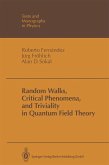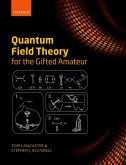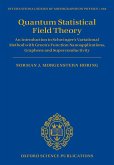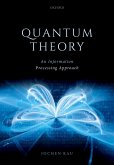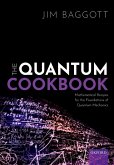Introduced as a quantum extension of Maxwell's classical theory, quantum electrodynamics has been the first example of a Quantum Field Theory (QFT). Eventually, QFT has become the framework for the discussion of all fundamental interactions at the microscopic scale except, possibly, gravity. More surprisingly, it has also provided a framework for the understanding of second order phase transitions in statistical mechanics. As this work illustrates, QFT is the natural framework for the discussion of most systems involving an infinite number of degrees of freedom with local couplings. These systems range from cold Bose gases at the condensation temperature (about ten nanokelvin) to conventional phase transitions (from a few degrees to several hundred) and high energy particle physics up to a TeV, altogether more than twenty orders of magnitude in the energy scale. Therefore, this text sets out to present a work in which the strong formal relations between particle physics and the theory of critical phenomena are systematically emphasized. This option explains some of the choices made in the presentation. A formulation in terms of field integrals has been adopted to study the properties of QFT. The language of partition and correlation functions has been used throughout, even in applications of QFT to particle physics. Renormalization and renormalization group properties are systematically discussed. The notion of effective field theory and the emergence of renormalisable theories are described. The consequences for fine tuning and triviality issue are emphasized. This fifth edition has been updated and fully revised, e.g. in particle physics with progress in neutrino physics and the discovery of the Higgs boson. The presentation has been made more homogeneous througout the volume, and emphasis has been put on the notion of effective field theory and discussion of the emergence of renormalisable theories.
Dieser Download kann aus rechtlichen Gründen nur mit Rechnungsadresse in A, B, BG, CY, CZ, D, DK, EW, E, FIN, F, GR, HR, H, IRL, I, LT, L, LR, M, NL, PL, P, R, S, SLO, SK ausgeliefert werden.





